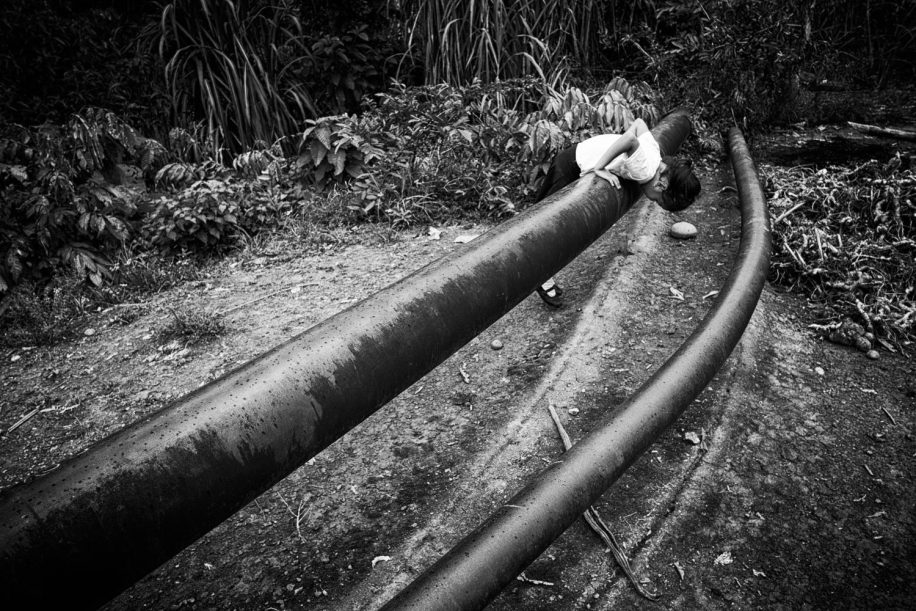

Génesis, who is 5-years of age, plays on an oil pipeline that crosses by her house. The pipeline is just a few meters from the entrance to where she lives in the periphery of El Coca, Orellana Province. Studies by UDAPT reveal the high percentage and increase of cases of residents with cancer who live closer to oil wells, gas flares and areas where there were spills and, as a consequence, use of water from rivers contaminated by oil wastes.
2023 ZEKE Award: First Place for Systemic Change
Piatsaw: A document on the Resistance of the Native Peoples of Ecuadorian Amazon against extractivism.
Photographer: Nicola Okin Frioli
2023 ZEKE Award: First Place for Systemic Change
Exhibit Title: Piatsaw: A document on the Resistance of the Native Peoples of Ecuadorian Amazon against extractivism.
Location: Ecuador
This photo-documentary tells the story of the resistance that the indigenous people of the Ecuadorian Amazon have waged against extractive companies that threaten their territories through continuous concessions and the obvious contamination caused by the oil company Texaco, during its presence in the country.
In 1964, Texaco (now Chevron), arrived in Ecuador with a concession of 1.5 million hectares in the provinces of Sucumbíos and Orellana. At that time, they were extracting oil from the 450,000 hectares in their ownership.
The oil giant admitted in court to having dumped 19 billion gallons of crude oil and harmful chemicals directly into unlined rivers and pools in a particularly biodiverse region of the Ecuadorian rainforest over decades.
The inhabitants of the region suffered the consequences of extraction, their health and future were affected by contaminants present in the soil and groundwater, quantities exceeding permissible levels in Ecuador.
Following the events that indelibly marked the future of many families, the native peoples, threatened by the continuous concessions to companies for extractive activities, applied different defense methodologies against mining, oil companies and the Government.
Make Comment/View Comments